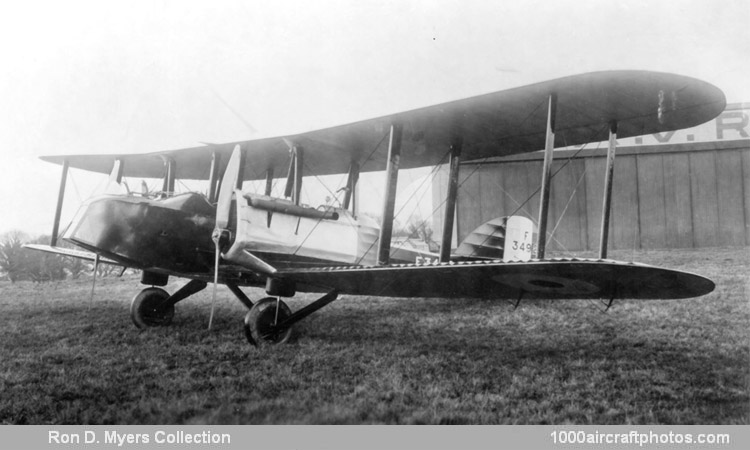08/31/2015. Remarks by Johan Visschedijk: "The Manchester of 1918, final variation on the Pike/Avro 529 theme, was a three-seat, twin-engined bomber or photo reconnaissance fighter designed to Air Ministry requirements around two of the new 320 hp A.B.C. Dragonfly I seven-cylinder radial engines. Unlike its forebears the Manchester was constructed entirely at Hamble and its deeper, more shapely fuselage giving improved crew accommodation was but one of many refinements, others including a graceful (almost de Havilland-shaped) rudder, and ailerons balanced by means of 'park bench' auxiliary airfoils.
Construction of the first Manchester was completed by October 1918 after which it was dismantled for covering, during which the opportunity was taken to fit two 300 hp Siddeley Puma high compression, liquid-cooled engines. This was to prevent interruption of flight tests by the non-delivery of the Dragonfly engines which had run into a number of teething troubles. The Pumas arrived at Hamble in November, and thus powered, the aircraft was known as the Avro 533A Manchester Mk.II. First flights took place early in December 1918 and the Mk.II aircraft F3492 consequently had an earlier serial than the Mk.I which followed. On December 20 F3492 went to No. 186 Development Squadron, Gosport, where it remained until at least January 9, 1919 before proceeding to Martlesham in the following March. Official trials lasted until September 1919 when F3492 returned to Hamble to be fitted with Napier Lions, a project which did not materialize.
Delivery of the Dragonfly engines in December 1919 enabled the second airframe F3493 to be completed as the Manchester Mk.I. After prolonged manufacturer's tests it was flown from Hamble to Martlesham for official trials in October 1919, the journey via Winchester, Basingstoke, London and Chelmsford occupying 90 minutes.
Apart from the engines and the revised nacelle shape of the Mk.I which decreased the effective area of the lower wing by 4 sq.ft (0.37 sq.m), the two marks of Manchester differed only in their tail units. Both had balanced rudders but all tail surface areas were greater in the Mk.I which had taller vertical surfaces and an unbalanced elevator. That of the Mk.II was horn balanced.
The performance of both marks was quite remarkable on comparatively low power and despite their size could be looped and spun, but the need for a bomber of this type disappeared when the war ended. A third airframe, intended as the Manchester Mk.III with two 400 hp Liberty 12 engines, was completed but the engines were never fitted. The jigs were then dismantled and A.V. Roe's war effort was at an end."


